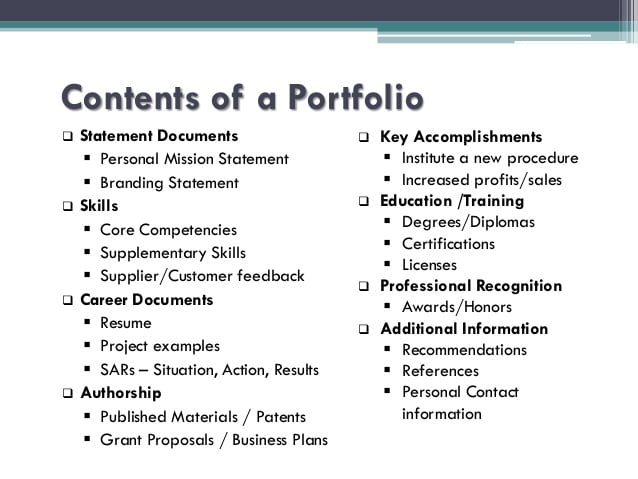In today’s business society, companies without a business portfolio cannot grow or attract loyal customers. A business portfolio is a set of a company’s products, services, and strategic business units. However, a business portfolio should not be confused with a product portfolio. Nevertheless, this article will help you understand business portfolio analysis, templates, and examples.
Business Portfolio
A business portfolio is a set of a company’s products, services, and SBU that allows it to grow its vision and achieve its strategic goals. An SBU means Strategic business unit. Furthermore,it is a blend of several products, services, and business units that make up a business.
By using it, managers can take strategic business-level decisions for the whole company. However, each unit within the portfolio can also be treated as an asset. Nevertheless, it helps you build and grow the trust of potential customers and your competitive position. That is, you answer the most important customer’s question: “How can your company do useful for him”.
Product Portfolio
A product portfolio is the set of all the products and/or services a company offers. However, a business portfolio is different from a product portfolio in that the latter is only concerned about the physical items the company offers. While, a business portfolio has a wider view including equipment, machinery, and fixed assets.
It may also include business assets such as business units, subsidiaries, the available product lines, and strategic alliances. Additionally, it includes patents, registered brands, and other relevant details that help grow a company’s financial results. However, good management of the company portfolio will boost its performance by taking advantage of all its resources.
Moreover, a portfolio should also be planned and designed according to the company’s mission, vision, and strategic objectives. Hence, developing those that are needed through those currently available.
What Is Included in a Portfolio Analysis?
The term “Portfolio Analysis” refers to the method by which a company examines its entire stockpile of assets. The purpose of the evaluation is to calculate the potential benefits against the possible drawbacks.
How Do you Make a Business Portfolio?
A lot of research work and time goes into the process of planning an industry portfolio. A business portfolio sets the basis of a business. However, this is why you need to pay heed to all the steps so you can come out with a portfolio that can channel your company on the path of success.
The following factors need definite focus upon to plan a good portfolio;
#1. Find out the Strategic Business Units (SBU)
This step in planning a portfolio is vital and requires identifying several Strategic Business Units (SBUs).
The perk of SBU is that it can be expected without affecting any business or getting hindered by one as its objective and mission are totally separate.
As an SBU falls under a company, it can be in the form of a company division, a product line, or an entirely individual brand. However, all it depends on is the company’s nature and organization.
#2. Know Your Marketing Niche
The market plays a crucial role when planning a company’s portfolio. It gives information about opportunities that will help the business grow. However, It separates those markets to which a company can be attracted.
Below, are the factors that draw the attention of a company to a particular industry. Nevertheless, companies must carefully look into these factors.
- A larger market size helps in increasing connectivity.
- The growth rate determines how fast the company will become notable
- what is the market profitability
- The pricing trends tell you about the right pricing strategy your business should have to penetrate the target market
- Competition is one of the major factors, it is necessary to have a survey of the industry’s competition to evaluate chances of wrecking
#3. Evaluate your Competitive Strength in your target marketing
While making a portfolio, you need to understand that each SBU has its competition which calls for a close review. Thus, examining competitive strength extends to the company the dimension of assessing it.
Having a vision while planning a business portfolio will boost the company’s value and support in setting the business goals. However, let us now understand what is business portfolio analysis.
What Is a Business Portfolio Example?
A company’s portfolio is the complete inventory of its assets. The term encompasses things like the tools and machinery used in a new business. Product portfolios, on the other hand, are related to a company’s actual inventory. The answer lies in the goods they’ve introduced to the targeted industry.
How Do You Conduct a Portfolio Analysis?
Portfolio analysis begins with familiarizing oneself with the historical performance of various assets so that one can predict how the addition or removal of a specific asset will affect the portfolio as a whole. It is useful to look back on several stages. Examine the assets in aggregate, compare them to one another, and analyze each asset separately.
Business Portfolio Analysis
A business portfolio analysis is primarily a process of categorizing a company’s products and services and based on their performance and competitiveness. The categorizing helps a company recognize where they should invest, reorganize, cut costs, and improve their overall business so that it’s more efficient and profitable.
Portfolio Analysis Tool: The Boston Growth-Share Matrix
The Boston Growth-Share Matrix can be used for business portfolio analysis. It helps in evaluating the businesses that make up a company and the regard they should receive. However, management tends to invest in its more profitable products and businesses. Also, on the contrary, fewer resources into weaker products and businesses.
Nevertheless, the first step that needs consideration is to identify the key businesses that make up the company: The Strategic Business Units (SBUs). However, Strategic Business Units may be a part of the company, a product line, a brand, or even a single product.
Then, the company is able to evaluate the attractiveness of each SBU in order to decide how much attention, or support, it should receive. But why should the companies do so? Clearly, because it helps to find how best it can use its strengths and competencies so as to take advantage of attractive opportunities in the market. Hence, each SBU should be examined with regard to the attractiveness of its market and the strength of its position in that market.
Business Portfolio Template
Business Portfolio Template highlights company profiles, portfolios, products, etc. However, the Business Portfolio template can be in sales, marketing, and case studies. Also, the 6-slide PowerPoint template brings the framework and qualifications of a business unit. The visuals include the Company’s About Us, Services, and necessary skills required for business portfolios.
Nevertheless, the PowerPoint graphics are there to gain the attention of the audiences or prospective buyers. Also, they ensure that the best of the company assets are given proper focus. The beauty of the business diagrams, slide graphics, and PowerPoint vectors used will help in creating an attractive presentation.
Examples of Business Portfolio
Below is an image describing the examples and content of a business portfolio. However, an example of a business portfolio helps in planning it.

Conclusion
In conclusion, it should be noted that business portfolios are different from product portfolios. However, its analysis is primarily a process of categorizing a company’s products and services based on their performance and competitiveness.
Business Portfolio FAQ
What is a business portfolio?
A business portfolio is a set of a company’s products, services, and SBU that allows it to grow its vision and achieve its strategic goals
What is a business portfolio example?
It may also include business assets such as business units, subsidiaries, the available product lines, and strategic alliances. Additionally, it includes patents, registered brands, and other relevant details that help grow a company’s financial results.






